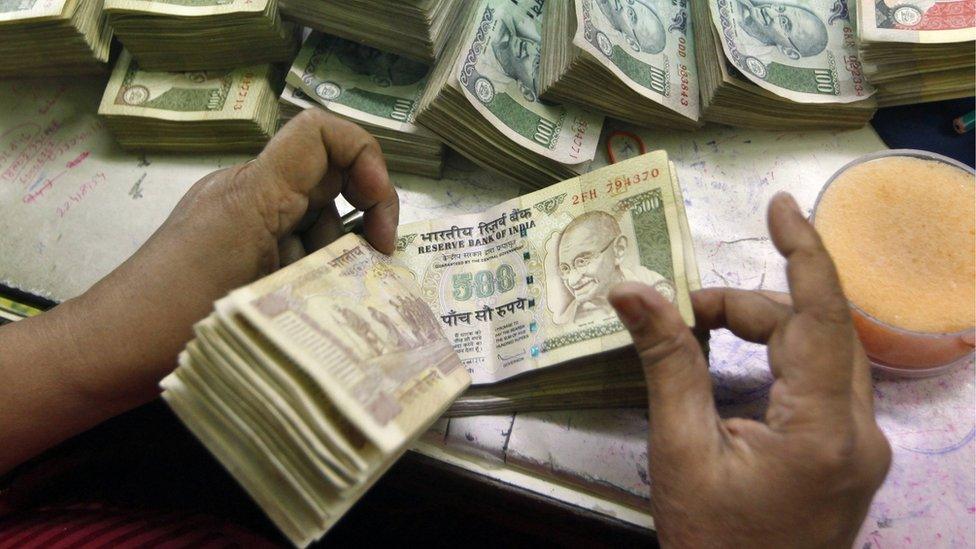India-US trade : Is Trump right about India's high tariffs?
- Published
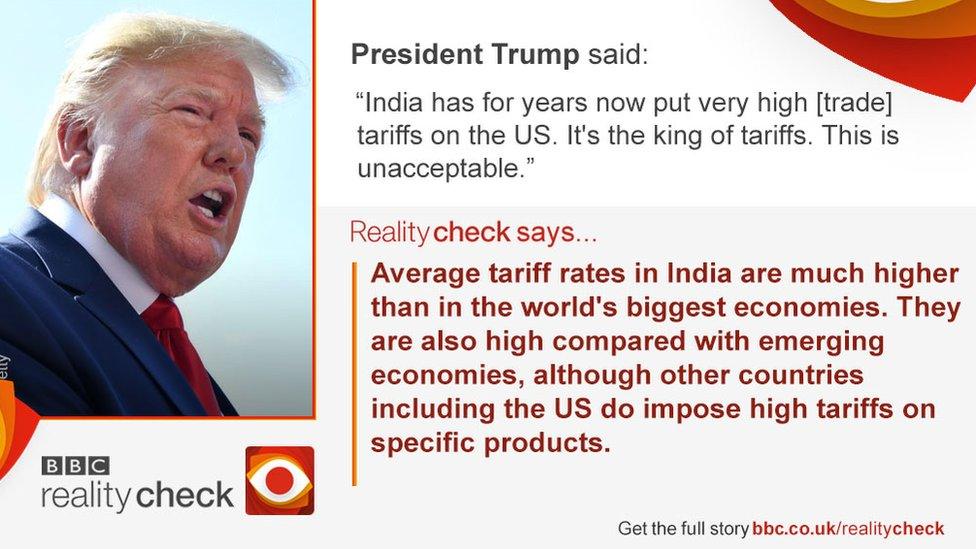
Claim: India imposes very high tariffs on imports - some of the highest in the world - according to US President Trump.
Verdict: It's true that average tariffs in India are much higher than in the world's biggest economies, and they are also among the highest compared with other emerging economies. But other countries have high tariffs on specific products, and the US has imposed tariffs on more than $360bn worth of Chinese goods in its trade war with Beijing.

Trade between India and the US is expected to be a key issue during Prime Minister Narendra Modi's visit to the US this week.
Despite growing political and strategic ties, there's been tension over trade issues. President Trump says India's tariffs - taxes on imports - are "unacceptable," and has described India as the "king" of tariffs.
An official US report this year said India's tariff rates on other members of the World Trade Organization (WTO) remain "the highest of any major economy.", external
The report referred to the average tariff rate which members of the WTO apply to each other when they don't share a trade agreement.
India's average tariff rate in 2018 was 17.1% - that is significantly higher than the US, Japan and the EU, all of whom had rates of between 3.4% and 5.2%.

India's average tariff levels are more in line with other emerging countries - Turkey's average rate in 2018 was 10.7%, Brazil's was 13.4% and Egypt's 19.1% - so Mr Trump is correct to say that on this measure India has one of the highest tariff regimes globally.
The US trade war with China has led both countries to impose a series of targeted tariffs against each other over the past year.
Although these are not yet reflected in the annual WTO data, this use of tariffs as a lever of global trade policy is likely to push the average level of tariffs higher for both countries.
What does India say?
India argues its average duties are well within the limits agreed as part of WTO rules on trade.
Indian officials also point out that on another measurement of tariff rates - what's called the trade-weighted average - India comes out better., external
This takes the volume of imports, and calculates the average of all the tariffs which are actually collected.
In 2017, India's trade-weighted average tariff was 11.7%, Brazil's was 10% and South Korea's was 8.1%.
But trade-weighted average tariffs for the US, the EU and Japan were much lower - at 2.3%, 3% and 2.4% respectively.
India is not alone in charging high duties - for example, Japan, South Korea and Australia all have high tariffs on specific imports.
The US imposes a 350% tariff on certain types of tobacco, and 100% or higher on certain types of European cheese and chocolate, as well as peanuts.
But the US overall average tariff rate has historically been very low - it had one of the lowest rates in the world in 2018, according to one report., external
What tariffs has India imposed on the US?
India increased tariffs on 28 American products in June, including almonds, walnuts, and apples, as well as US steel.
The duty on US walnuts went up to 120%, while the duty on chickpeas and some types of lentils was raised to 70%.
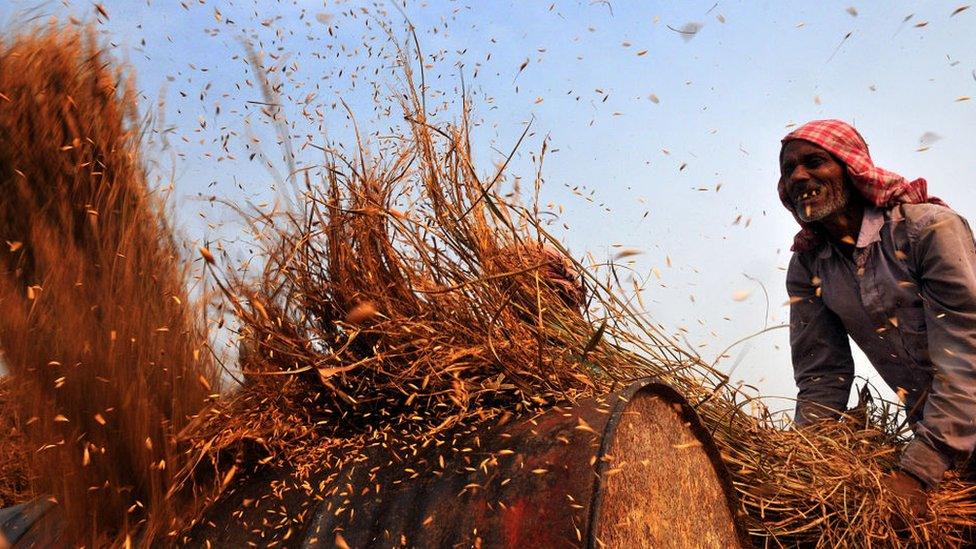
India's important agriculture sector is protected by tariffs
India's move came after the US had withdrawn special trade privileges for the country, affecting more than $5bn worth imports from there.
India was also angered by Washington's refusal to exempt India from steel and aluminium tariffs last year.
India mostly exports gems, pharmaceuticals, machinery, mineral fuels and vehicles to the US.
Apart from agricultural produce, the US exports to India precious metals and stones, mineral fuels, aircraft, machinery, and optical and medical instruments.

President Trump has highlighted India's tariffs on Harley Davidson motorbikes, which used to be a 100%, but were halved after the US complained.
The US has also complained about duties imposed on information technology products as well as price controls on medical equipment, rules which favour domestic e-commerce firms and require digital service providers to store data locally.
Despite this, bilateral trade has been steadily increasing. In 2018, it reached $142.1bn, with India having a surplus of $24.2bn, according to official US data., external



- Published16 January 2020
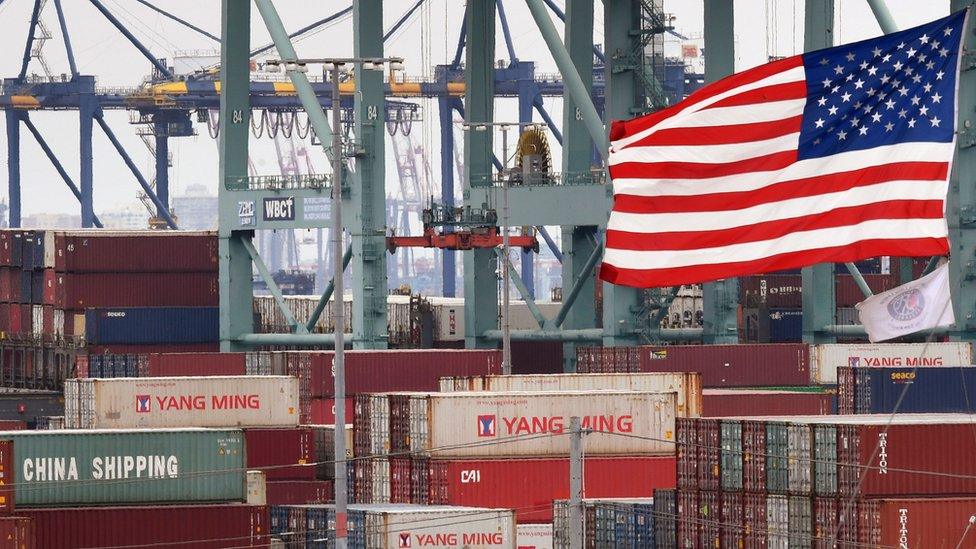
- Published11 April 2019
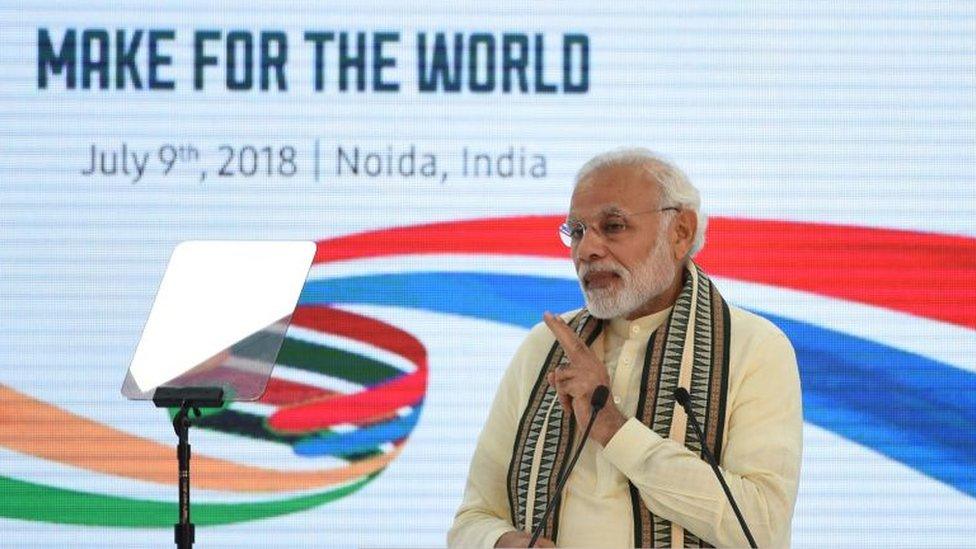
- Published15 June 2019
